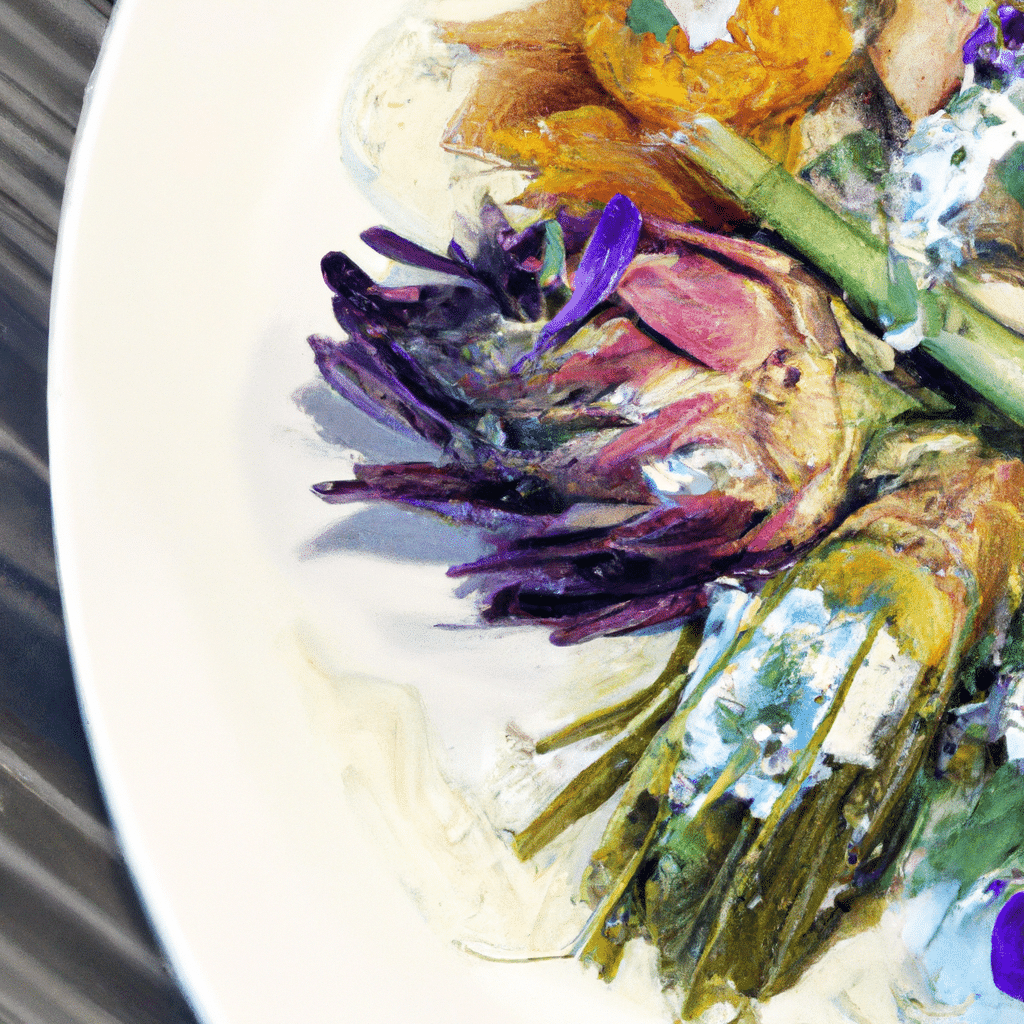Cardoons, also known as artichoke thistles, are a unique and versatile vegetable that deserves more attention in the culinary world. With their distinct flavor and impressive nutritional profile, cardoons can be a delightful addition to any dish. In this comprehensive guide, we will explore the various ways to cook, serve, and enjoy cardoons, highlighting their incredible taste and health benefits.

What are Cardoons?
Cardoons belong to the same family as artichokes and have a similar appearance. They are native to the Mediterranean region and have been cultivated for centuries for both culinary and medicinal purposes. The plant itself is tall and spiky, with large leaves and purple flowers. It is the stalks of the cardoon that are primarily consumed, offering a unique texture and flavor.
How to Prepare Cardoons
Before diving into the cooking methods, it is important to properly prepare cardoons. Here’s a step-by-step guide on how to get them ready for your culinary adventures:
- Start by selecting fresh cardoons with firm stalks and vibrant green leaves. Avoid any wilted or discolored ones.
- Cut off the base and remove any tough outer leaves.
- Using a sharp knife, trim the stalks, removing any thorns or strings.
- As cardoons tend to oxidize quickly, it is recommended to soak them in acidulated water (water with lemon juice or vinegar) to prevent discoloration.
- Finally, rinse the cardoons thoroughly under cold water to remove any dirt or debris.
Once the cardoons are prepped and ready, it’s time to explore the various cooking methods.
1. Boiling Cardoons
Boiling is one of the simplest and most common ways to cook cardoons. Here’s how to do it:
- Cut the cardoons into manageable pieces, around 4-5 inches long.
- Fill a large pot with water and bring it to a boil.
- Add a pinch of salt to the boiling water.
- Carefully place the cardoon pieces into the pot and let them cook for about 20-30 minutes, or until they become tender.
- Once cooked, drain the cardoons and they are ready to be used in various recipes.
Boiled cardoons can be enjoyed as a side dish, incorporated into salads, or used as an ingredient in soups and stews.
2. Braising Cardoons
Braising cardoons adds a depth of flavor and creates a tender texture. Follow these steps to braise cardoons to perfection:
- Cut the cardoons into smaller pieces, similar to the boiling method.
- In a large skillet, heat some olive oil or butter over medium heat.
- Add minced garlic and sauté until fragrant.
- Place the cardoon pieces in the skillet and cook them for a few minutes, allowing them to brown slightly.
- Pour in a flavorful liquid, such as vegetable broth or white wine, to cover the cardoons partially.
- Reduce the heat to low, cover the skillet, and let the cardoons simmer for about 30-40 minutes, or until they are tender.
- Once braised, the cardoons can be served as a standalone dish or incorporated into pasta, risotto, or gratins.
3. Grilled Cardoons
Grilling cardoons adds a smoky charred flavor that enhances their natural taste. Here’s how to grill cardoons:
- Cut the cardoons into long, thin strips.
- Brush the cardoon strips with olive oil and season them with salt and pepper.
- Preheat the grill to medium-high heat.
- Place the cardoon strips directly on the grill grates and cook for about 3-4 minutes per side, or until they become tender and develop grill marks.
- Remove the grilled cardoons from the heat and serve them as a delightful side dish or incorporate them into sandwiches or wraps.
4. Cardoons in Soups and Stews
Cardoons can add a unique flavor and texture to soups and stews. Here’s how to incorporate them into these comforting dishes:
- Follow the boiling method mentioned earlier to cook the cardoons partially.
- Prepare your favorite soup or stew recipe, ensuring that there is enough liquid to cook the cardoons further.
- Add the partially cooked cardoons to the simmering soup or stew and let them cook for an additional 15-20 minutes, or until they become tender and blend harmoniously with the other ingredients.
- Serve the cardoon-infused soup or stew with a sprinkle of fresh herbs for added freshness.
5. Cardoons in Salads
Cardoons can bring a delightful crunch and unique flavor to salads. Here’s how to incorporate them into your favorite salad recipes:
- Follow the boiling method mentioned earlier to cook the cardoons until tender.
- Once cooked, let the cardoons cool and then cut them into bite-sized pieces.
- Combine the cardoons with a variety of fresh vegetables, such as cherry tomatoes, cucumbers, and radishes.
- Drizzle the salad with a tangy vinaigrette or a creamy dressing of your choice.
- Toss everything together gently and serve the refreshing cardoon salad as a starter or a light main course.
Conclusion
Cardoons are a versatile vegetable that offers a unique flavor, texture, and numerous health benefits. Whether boiled, braised, grilled, or incorporated into various dishes, cardoons can elevate your culinary creations to new heights. Experiment with these cooking methods and explore different flavor combinations to fully enjoy the versatility of cardoons. Embrace this underappreciated vegetable and impress your family and friends with its delightful taste and nutritional value. So, go ahead and discover the wonders of cardoons in your kitchen today!



